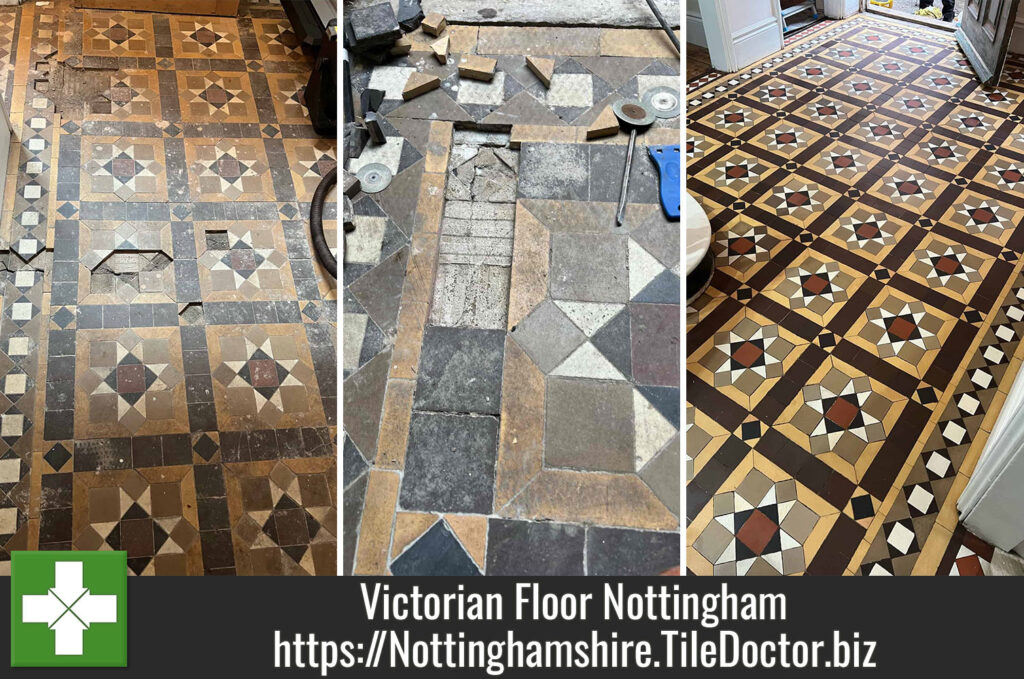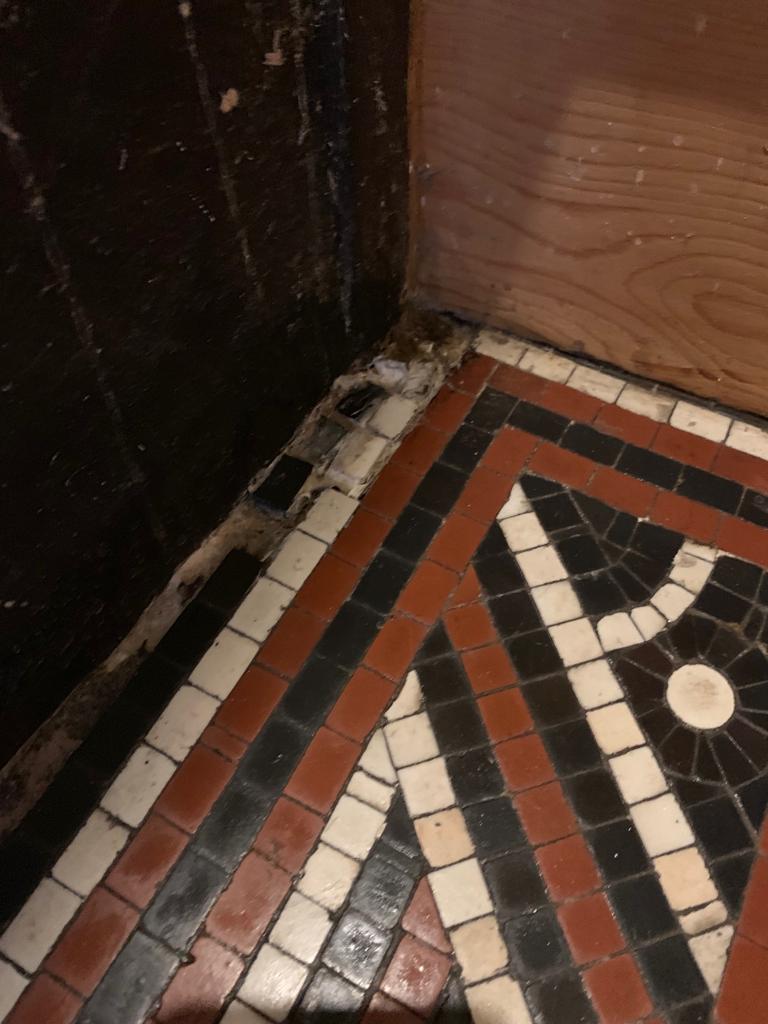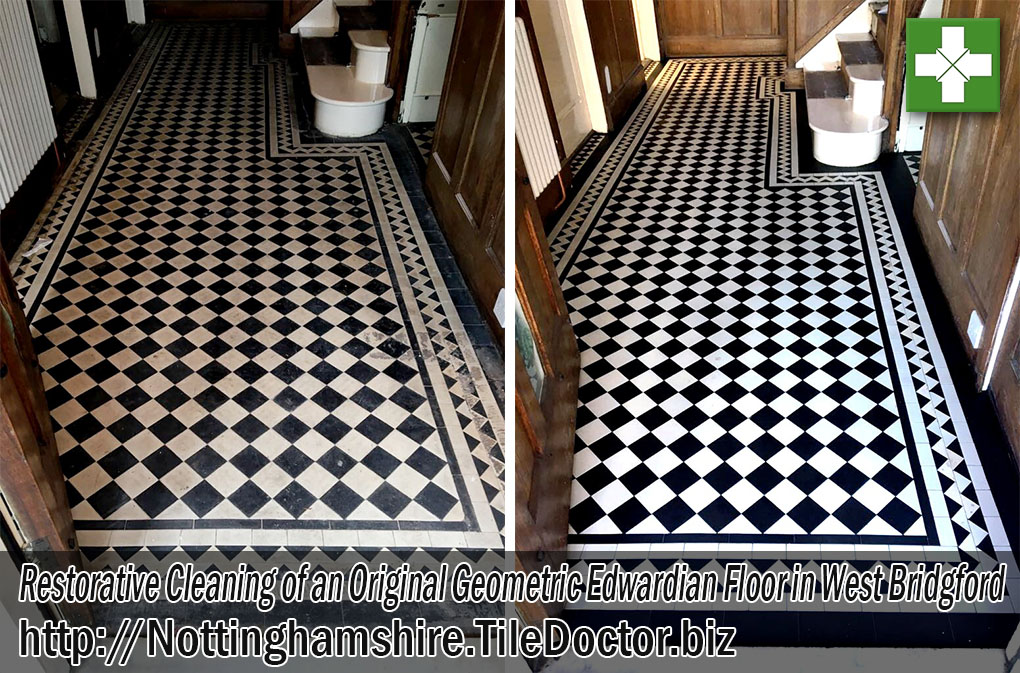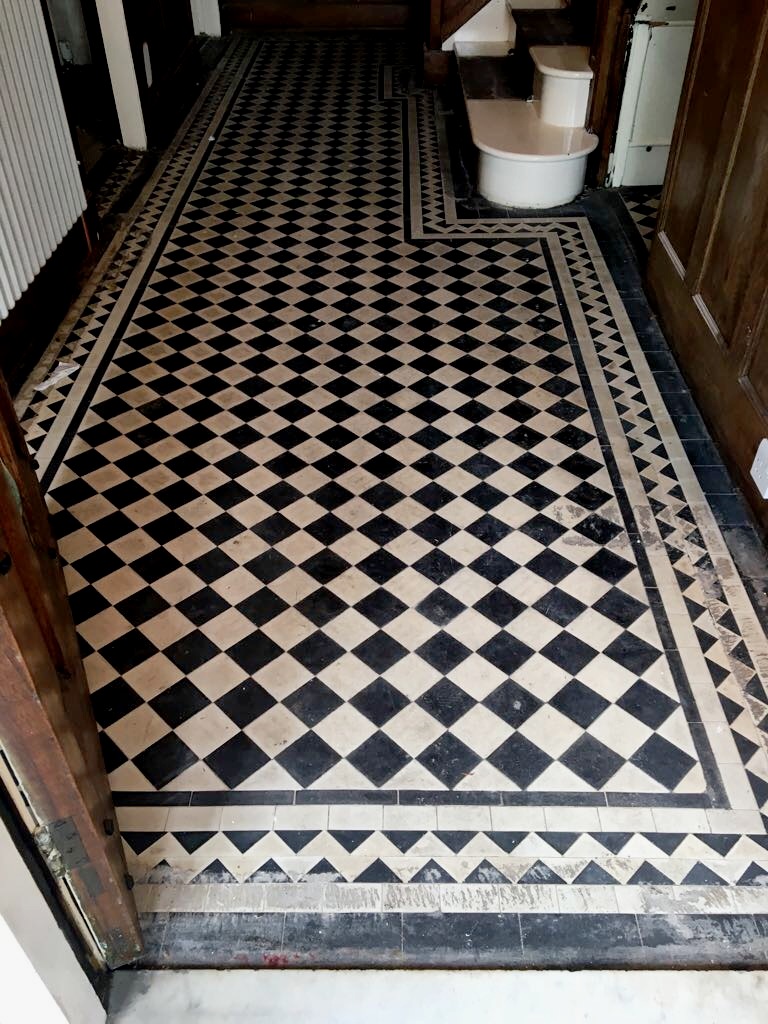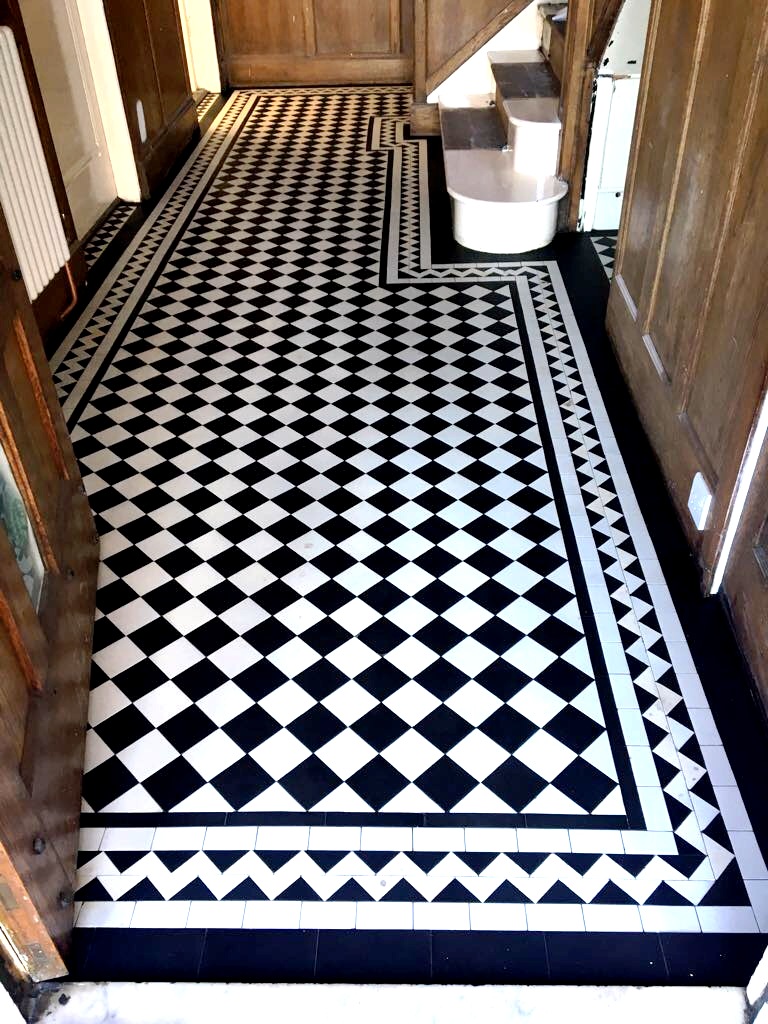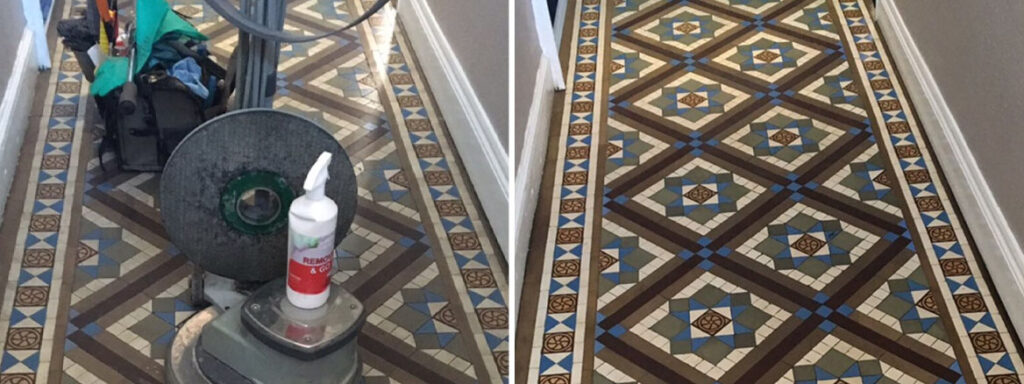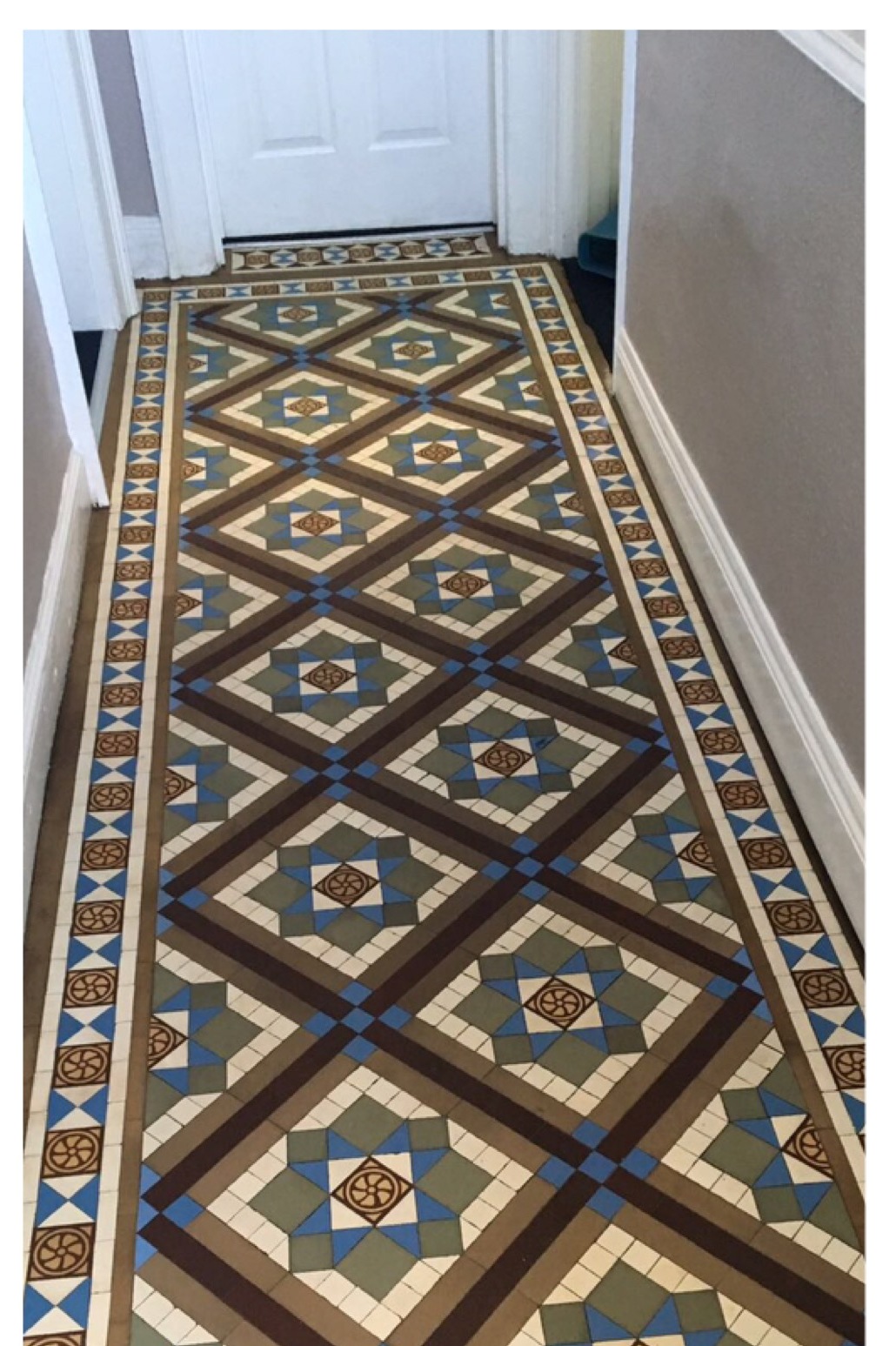Restoration of a Victorian Geometric Tiled Floor in Nottingham City
This Victorian Tiled Hallway at a property in Nottingham City is a fantastic example of what can be done to restore an old floor. If you take a good look at the before photographs on this page, you will see not only was the floor dirty but there were many missing tiles that needed replacing to make the geometric pattern whole again.
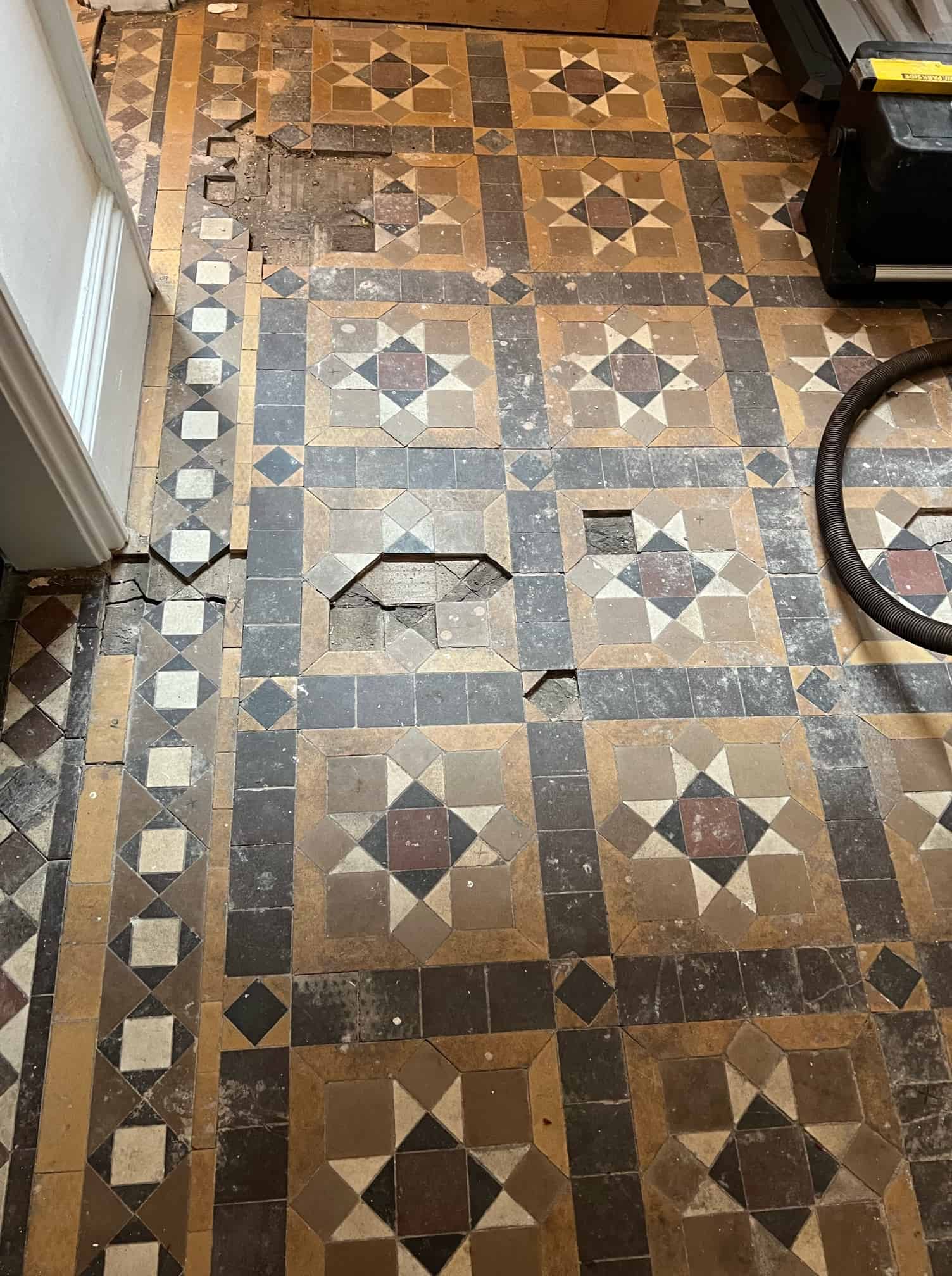 |
 |
We were contacted by the property ownerto repair the floor and the clean and seal to protect them. Initially the customer thought that only small repairs were required, however after inspection our survey highlightedextensive repairs were required. As part of the survey the missing, loose, and damaged tiles were counted to work out how many replacements would be required. Fortunately, I was able to source a good match from The Vintage Tile Company.
Repairing a Victorian Tiled Floor with Matching Replacements
To begin we focused on carrying out the extensive repairs which included rebuilding the sub floor with cement screed were necessary. Original tiles were repurposed where possible otherwise the replacements were carefully cut tiles to size to match the geometric pattern.

Once a section of tiling was complete it was fixed in place with a rapid setting flexible adhesive. There was a lot of meticulous tiling to do so the repairs took some time to complete.
Deep Cleaning a Victorian Tiled Hallway Floor
Next, we set about cleaning the tiles using low-moisture cleaning products to remove the ingrained dirt from the pores of thetile. This was done using Tile Doctor Oxy-Gel, a strong alkaline-based gel cleaner that is used to break down dirt and grime. With these old floors, it’s important to keep the use of water to a minimum so not to exacerbate any inherent damp issues. The cleaner was left to dwell for a short period before being agitated with a scrubbing pad. This process releases the dirt and the resulting soiled cleaning solution is then extracted using a wet vacuum.
This was followed by giving the floor and acid wash using another gel product made by Tile Doctor called Acid Gel. The acidic content of the product counters any efflorescent salts in the floor and cleans up the tile even further by removing old grout smears.
 |
 |
These products were used alongside Tile Doctors abrasive floor pads which use industrial diamonds of different grades. For the corners and difficult to reach places they also provide handheld Diamond blocks. The combination of products deep cleaned the floor removing old coatings, paint spots and ingrained historic soiling in the process.
Sealing a Victorian Tiled Hallway Floor
Once deep cleaning was completed the Tiles were sealed with Tile Doctor X-Tra Seal which is a specialist colour enhancing sealer that’s fully breathable which is an important feature when sealing old floors that don’t have a damp proof membrane.

As you can see from the photographs, the restoration was a massive transformation making our customer very happy. Before leaving I took time to explain how to look after the floor including the importance of protecting the integrity of the sealer by using a ph. neutral tile cleaning product such as Tile Doctor Neutral Tile Cleaner for regular cleaning.
Professional Restoration of a Victorian Tiled Hallway in Nottinghamshire
Restoration of a Victorian Geometric Tiled Floor in Nottingham City Read More »


